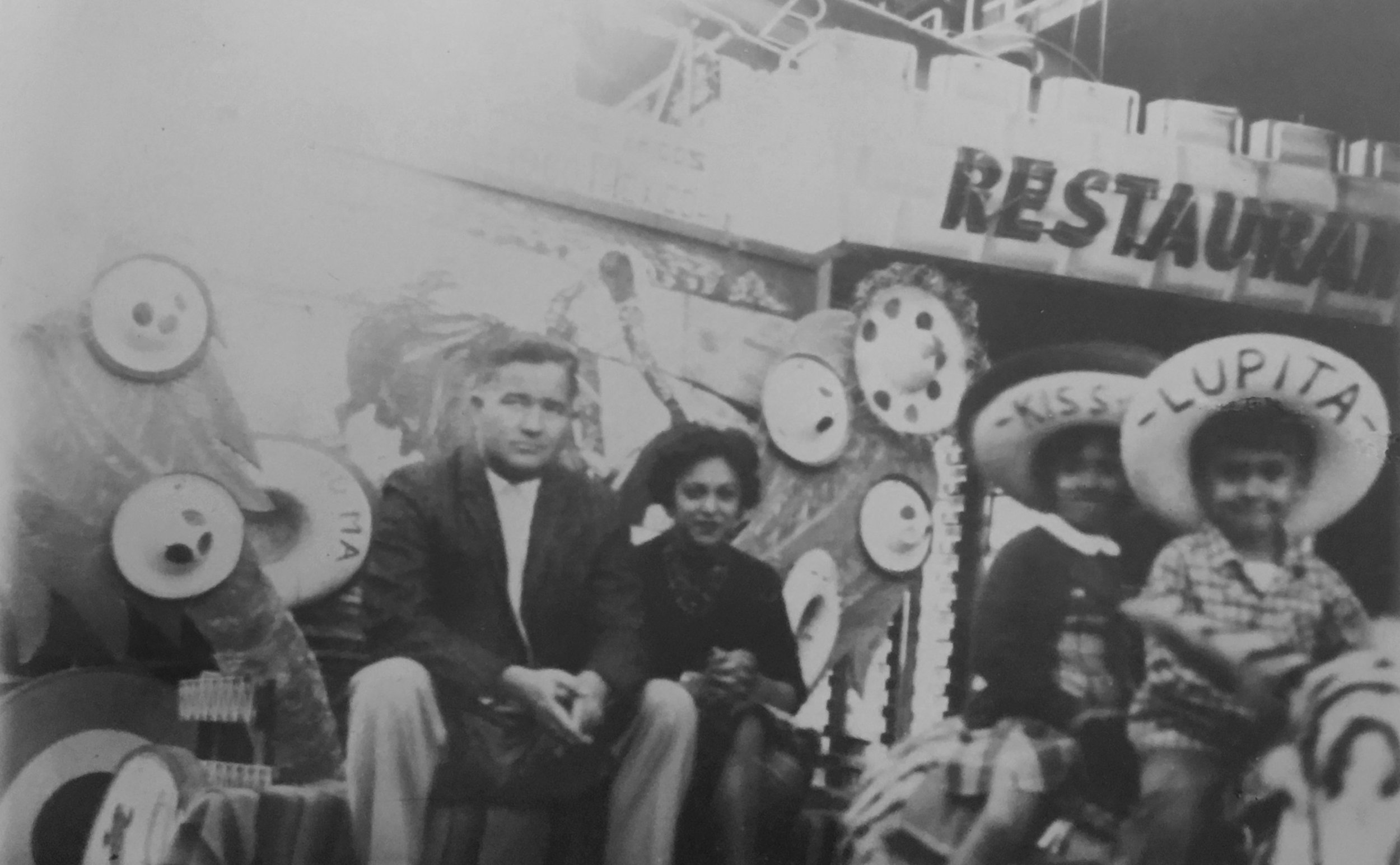I'M A PRODUCT of the border. My mother lived in Juárez, my father in El Paso. When she was a teenager, she crossed the river and worked for my dad. They moved to California. I was born in Fresno. Farm worker country. But we lived in the suburbs. When we returned to El Paso to visit relatives, we'd cross the bridge into Juárez so my parents could drink, and me and my sister could buy bulls' horns, sombreros and velvet Jesus paintings. The streets were packed. I held onto my mom's hand for fear I'd lose her grip. But I did. I spun around, there she was. Mexico staring me in the face—a stump on a skateboard, amputated, her hand held out begging for pesos.
My sister has a photograph from one of these trips. It is of her and me, my mom and dad, taken in Tijuana in the early 60s. My sister and I are seated upon a pair of donkeys. The donkeys have been painted in black and white stripes so that they look like a couple of zebras. I'm wearing a sombrero that says LUPITA on the brim. I have a sad half-smile. My sister's expression is blurred and unreadable. My mom looks tense. My father's eyes look away, averted, not present. Years later my father told me he was mourning the death of Clark Gable that day, and we had gone to Tijuana so he could drink. In Mexico photographs are called recuerdos, memories.
